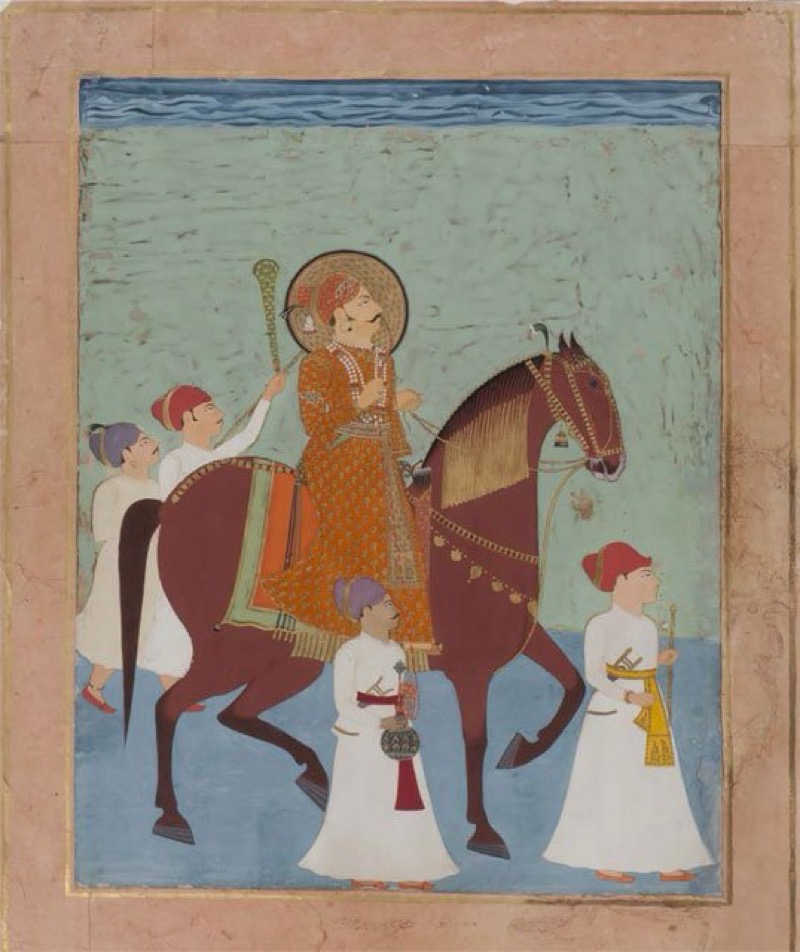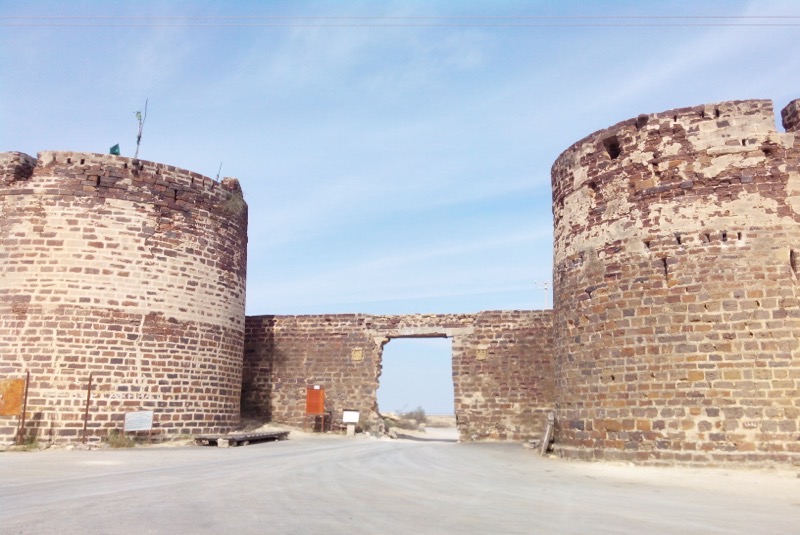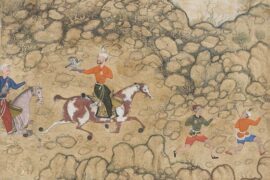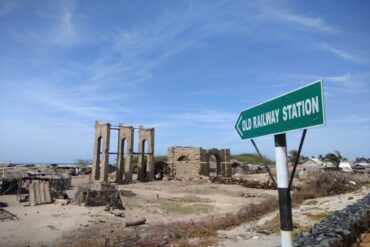Do you love exploring abandoned places? Do closed doors, haunted mansions, and names of forgotten towns invoke a sense of adventure in you? If so, pack your bags, rev your engine and find your way to Lakhpat, an abandoned port town in the remote areas of Gujarat.
Lakhpat is close to the India-Pakistan border, near the opening of Kori Creek in Kutch, Gujarat. The nearest city is Bhuj, one hundred and thirty-four kilometres away. The journey takes you through vast stretches of emptiness. However, when you reach there, a mind-boggling story of a once-booming port presents itself.
At Lakhpat, you find a colossal fort. Its walls, which are seven kilometres long, allow entry into the town; they were built to protect the port from invasions; the toll gate was used to tax merchants and travellers as it was an important trade route of the eighteenth century.
Centuries ago, Lakhpat was a significant place for the Sikhs; it is believed that Guru Nanak, the first Guru of Sikhism, stayed here before embarking on his journey to Mecca in the early sixteenth century. A Gurudwara was erected on the site where he resided in the nineteenth century. It houses his souvenirs, such as his slippers and a cradle.
Because it has been well preserved, the Gurudwara got the UNESCO Asia Pacific Prize for Conservation in 2004. It has shining white walls and a red-tiled roof, adorned by a thirty-four-metre Nishan Saheb, a saffron-clothed flagpole holding the Guru’s insignia, the Khanda Saheb.
Guru Nanak took four ‘Udasis,’ or absences from home, to travel around the Indian subcontinent. On two of the four travels, he is said to have gone through Lakhpat, then known as Basta Bunder. Now and again, devout Sikhs make the arduous trip to Lakhpat in observance of their faith.
Lakhpat used to be a wealthy town, which is why the town gained its name. Lakhpati, meaning millionaires, were, at one point in time, the citizens of the city. It is also believed to have derived its name from the daily trade, worth lakhs of rupees, at the port. Another legend suggests that the city was named after Rao Lakhaji, the eighteenth-century ruler of Kutch.

Since the mid-eighteenth century, the town flourished with timber, textiles, and ghee trade as it used to be on the mouth of the River Indus, allowing easy access to other ports on the west coast of India. The strategic location allowed a comfortable passage to East Africa and Western Asia.
The flourishing town often faced continuous threats from thugs and robbers. So, Jamadar Fateh Muhammad, a commander in the army of a Rajput king, proposed constructing the fort to ward off threats.
However, according to local legends, the fort became the curse of the town. The construction wasn’t easily commissioned as the Raja did not want to spend money on building the walls. So, Fateh Muhammad looted the neighbouring town ruled by King Moso Pir. In the aftermath of the loot, King Mosopir passed away. But it is believed that his spirit still looms over the place.
Eighteen years after the fort was built, in 1801, an earthquake devastated Lakhpat, changing the city’s fate. The disaster wreaked havoc on the mercantile community. Moreover, the river Indus changed its course, and Lakhpat was no longer a harbour; over time, people abandoned the town.
The twenty-foot-tall walls withstood the earthquake. They still stand tall, narrating the haunted fate of Lakhpatis. Residents restored the village almost a century later. It once again thrived in the 1930s and 1940s and was elevated to the status of ‘taluka,’ complete with huge residences, warehouses, and even a school and a library.
However, with the India-Pakistan partition, the town’s destiny flipped once again; the strong cultural connections between Kutch and Sindh were broken, and Bibidullah port, which was responsible for the town’s resurgence, was out of reach due to its distance from the border.
Today, it is a ghost town. However, the twenty-four watchtowers of the fort present a majestic view of the Rann of Kutch. Just by the gurudwara, there is the stone tomb of Pir Ghaus Muhammad, a Sufi saint who practised both Hinduism and Islam. It has intricate embellishments of carved motifs made by devotees. The designs are known as Kubo in Kutch.
Sayyed Phir Shah’s nine-domed mausoleum, also known as ‘Lakhpat Masjit,’ also has a story to tell. The edifice stands as a memory of a scholar who was greatly respected by the kings and noblemen in the late eighteenth century. It was built in the early nineteenth century from locally quarried stone and is furnished with artistically carved wooden doors, windows, and jaalis.
Today, Lakhpat, stripped of its past glory, remains forgotten. However, it tells stories of a bustling city, an important trading port which welcomed people from all corners of the globe. Lakhpat, Kutch’s last bulwark, has a magnificent view of the ocean. The Border Security Force outposts maintain a close eye on the region.
-30-
Copyright©Madras Courier, All Rights Reserved. You may share using our article tools. Please don't cut articles from madrascourier.com and redistribute by email, post to the web, mobile phone or social media.Please send in your feed back and comments to [email protected]











